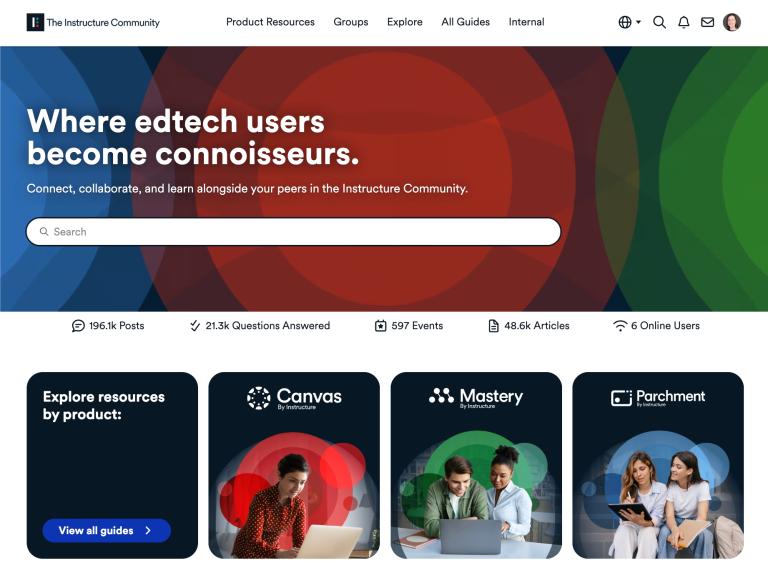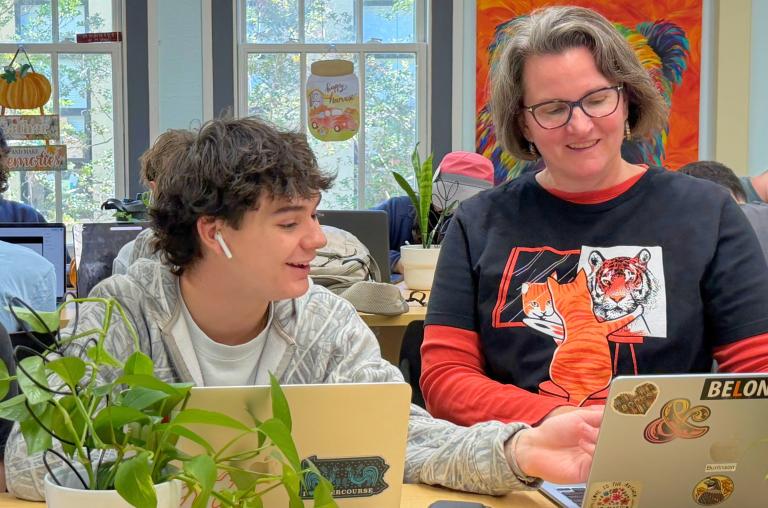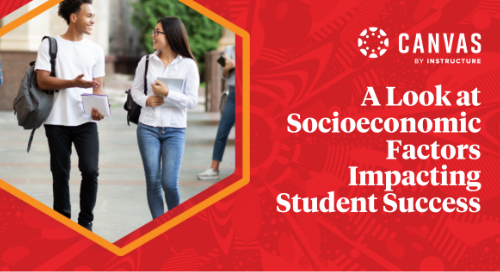While it’s commonly known that socioeconomic factors greatly impact students in higher education, understanding which factors rise to the top can be challenging. According to our global 2022 State of Student Success and Engagement in Higher Education report, there are many socioeconomic factors impacting student success and engagement, and four in particular have increased in importance from 2020 to 2022.
In its third year, the study finds that the top four socioeconomic factors impacting student success and engagement are:
-
Access to the internet
-
Access to learning resources
-
Access to technology devices
-
Psychological well-being
Three of the four factors are related to access, which is a growing concern for learners and educators today. Along with access, family dynamics represent another socioeconomic factor that influences student success. Those who take care of families and work simultaneously, especially outside of the US, have shared they now have more opportunity to access learning via online or hybrid courses since the rise of online learning coming out of the global pandemic.
Like last year, students from self-identified lower-income homes see the value of technology in supporting engagement and are almost as likely (72% vs. 76%) to believe their institution’s learning management system has positively impacted their classroom engagement.
In an open-ended question to identify additional factors that influence student success, respondents also named:
-
Access to mental health resources
-
Safety in the home
-
Learning disabilities
-
Exposure to crime and/or violence
-
Access to quality health care
-
Transportation options
-
Access to outside academic support
-
Physical disabilities
-
Access to mentorship
-
Access to outdoor spaces/nature
-
Number of parents at home during childhood
With so many factors impacting student success, institutions will want to consider more holistic approaches and comprehensive education technology that help reduce barriers for students seeking higher education.
Supporting Students Who May Be Struggling
What methods are higher education institutions using to help support students facing challenges in their academic journeys? According to our 2022 survey, more than half of institutions address student struggles through academic support (52%). Respondents said the following tools are available within their educational institution to address students’ needs:
-
Educational technology resources (39%)
-
General well-being resources (36%)
-
Internship placement (36%)
-
Laptops for student use (35%)
-
Student health care options and career development services (34%)
-
Free or low-cost transportation options (30%)
Institutions can continue to strengthen the student experience by adapting their support mechanisms to meet the unique needs of all student groups, including traditional, non-traditional, full-time, part-time, first-generation, English language learners, international students, etc.
To improve access to digital resources, it may be useful to partner with local technology companies and nonprofits to offer internet and digital resources to students who need it most.
To support engagement, institutions may consider augmenting tools that support students’ ability to engage on their terms according to their learning styles, including asynchronous video, transcripts, online quizzes, or downloadable resources, for example.
And to further support the feeling of inclusion and strengthen student communities, it may be helpful to engage student alumni in mentorship opportunities, alumni panels, short videos, or other innovative avenues.
Mental Health Resources Rise to the Top
With psychological well-being noted as one of the top factors impacting student engagement and success, there is an opportunity for institutions to make a positive impact by adapting the mental health resources they offer to students and faculty.
When it comes to supporting student and faculty mental health, our survey respondents indicate that institutions are motivating student engagement through support/counseling, study groups, and social activities.
Globally, administrators are significantly more likely to believe that their institution is doing well to address mental health issues (56%) compared to students (42%).
When asked what institutions are doing to support student and faculty mental health, respondents mentioned the availability of:
-
In-person or virtual counseling (52%)
-
Campus well-being events (45%)
-
Mentorship programs (33%)
-
Staff training (27%)
-
Mental health apps (25%)
-
Other (2%)
-
None of the above (13%)
Importantly, 13% of respondents say their institution offers none of the most common resources and tools to support mental health, which may not necessarily indicate an oversight of the institution to provide these resources, but may point to a lack of awareness among students of the options available to them.
Providing Mental Health Support Through Your LMS Is Possible
Learn how Instructure’s partnership with TimelyMD provides students with on-demand virtual medical and/or mental health care, enabling institutions to enhance access to in-the-moment care for their students. Read the full article.
Catering to Students with a “Culture of Care”
Heightened awareness of what keeps students from succeeding and attention to removing those barriers is key for meeting students where they are. Continued focus on overall mental and physical well-being through programs that identify and target individual student wellness will no longer be optional, but standard expectations. Attention to these factors beyond the pandemic can help institutions increase their impact in the long term.
Some of the methods that can be used to develop and strengthen a culture of care include:
-
Offering virtual mentorship, counseling, or advising services
-
Making it easier for students to access support resources no matter where they learn from
-
Integrating mental health support into the student experience helps to create a cohesive support system for students, where disparate services puts the onus on students to discover resources
-
Normalizing mental health checkups and awareness by offering free mental health screenings with information regarding additional resources and supports
-
Offering free self-help courses online or partnering with a mental wellness app to support students.
Interested in more findings?
These approaches represent a fraction of the perceptions and considerations provided in the 2022 State of Student Success and Engagement in Higher Education. For the study, we worked with Hanover Research, seeking input from 7,572 students, administrators and faculty from 2-year, 4-year, public, and private higher education institutions across 23 countries. In fielding this survey each year, our goal is to define measurements of student success, identify factors for engagement, and shed light on the path ahead for higher education.
Related Content
 inst-3step.jpg
inst-3step.jpgBlogs
 community-homepage.jpg
community-homepage.jpgBlogs
 kim-classroom.jpg
kim-classroom.jpgBlogs

